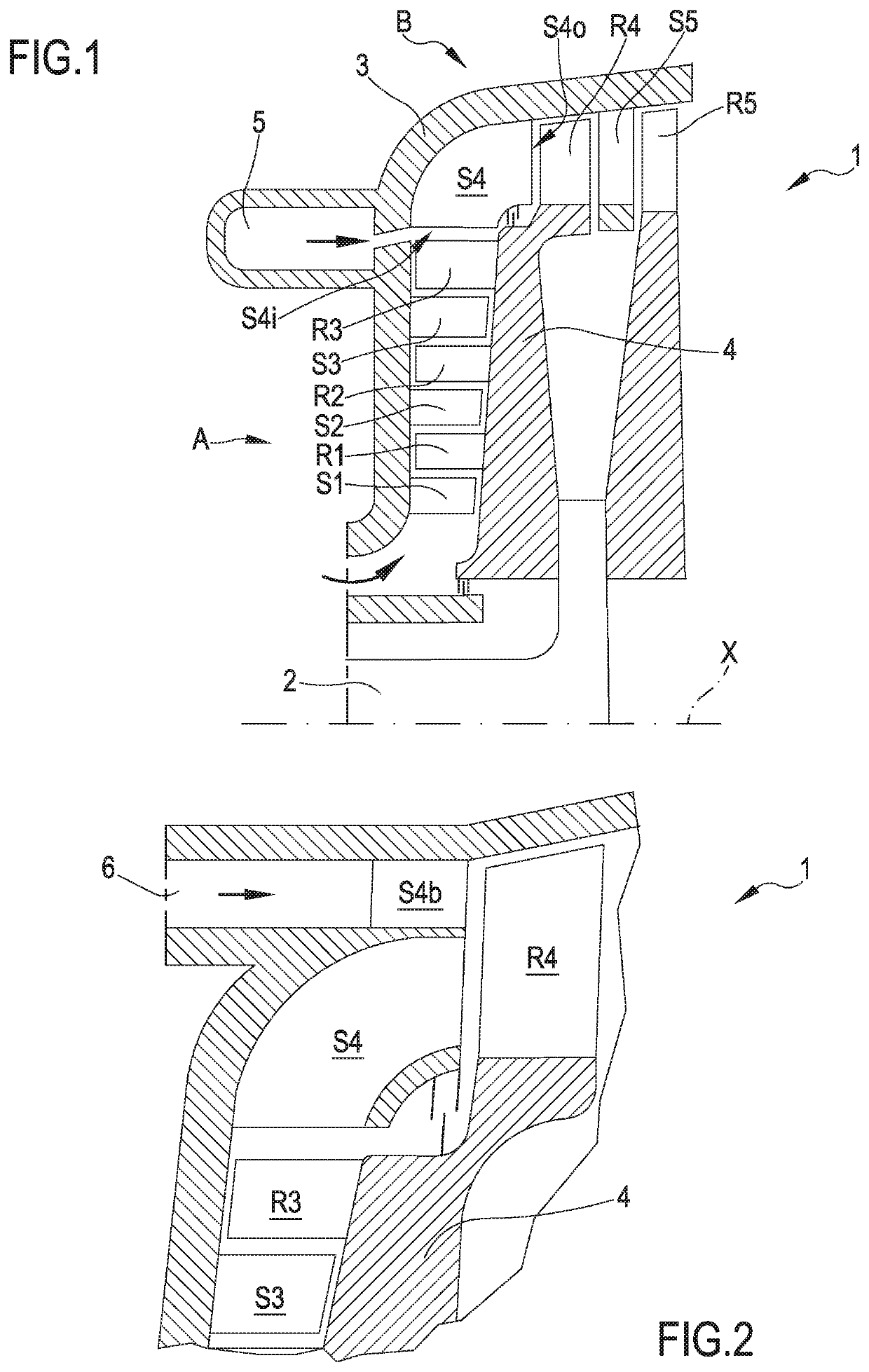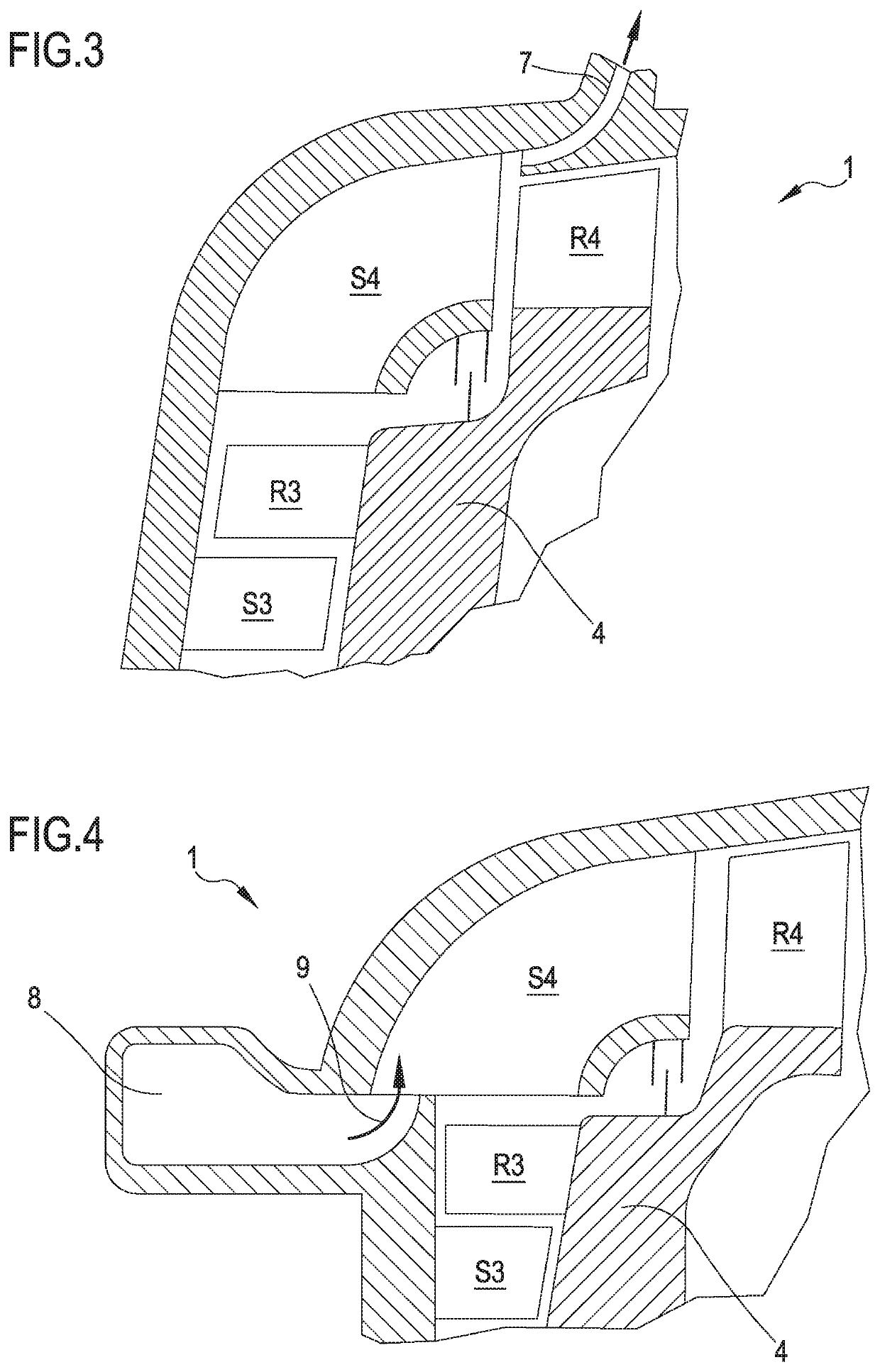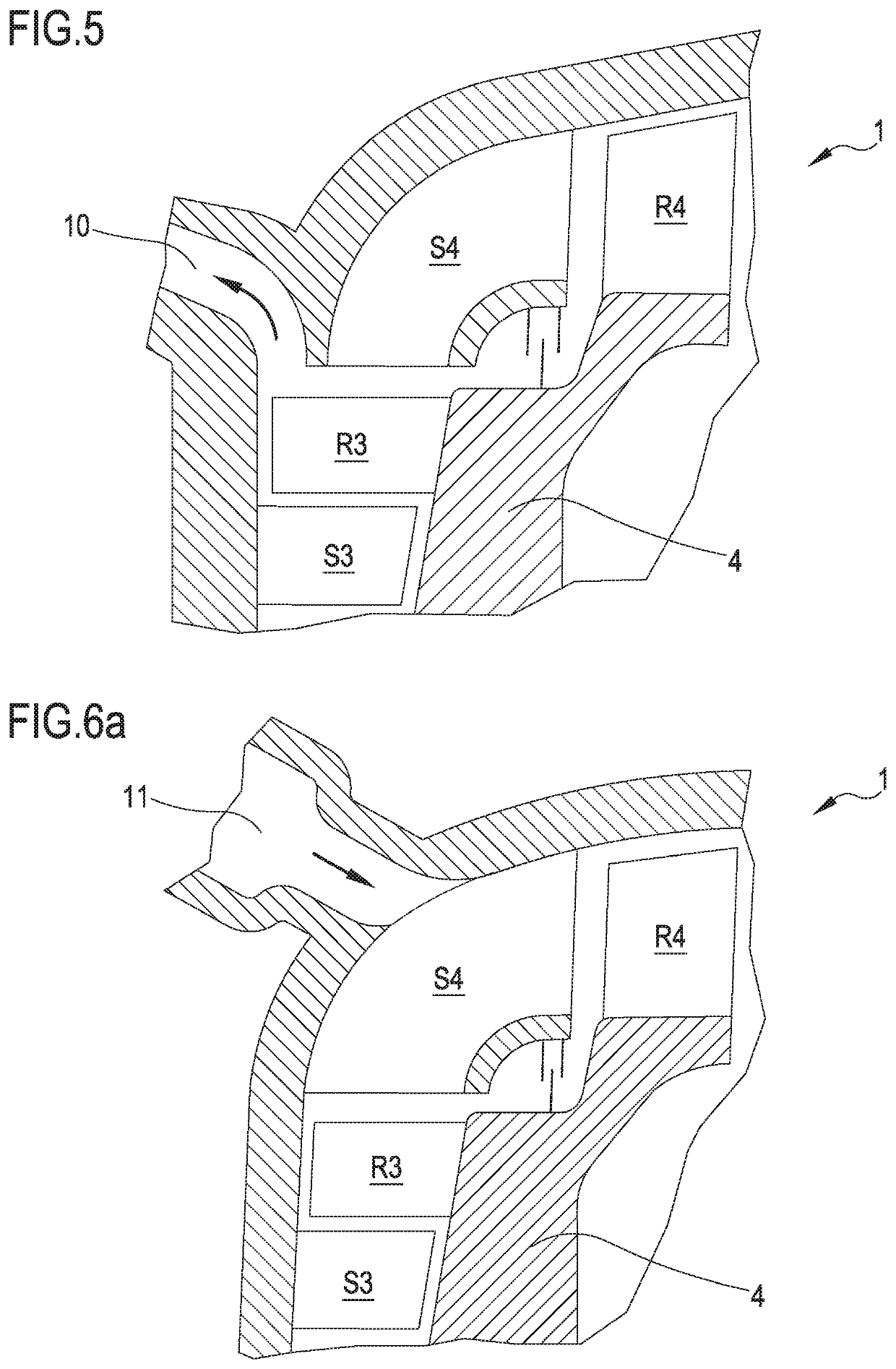Mixed flow optimized turbine
a technology of mixed flow and optimized turbines, which is applied in the direction of gas turbine plants, blade accessories, machines/engines, etc., can solve the problems of negative impact on the efficiency of the cycle, increase of axial extension, adversely affect the rotary dynamics of machines, etc., and achieve the effect of reducing the inevitable fluid scrambling and lowering the impact on the turbine's performan
- Summary
- Abstract
- Description
- Claims
- Application Information
AI Technical Summary
Benefits of technology
Problems solved by technology
Method used
Image
Examples
third embodiment
[0058]With reference to FIGS. 6a and 6b, the present invention is shown therein. Also in this configuration, the Figure shows the last radial stage S3-R3, the angular stator stage S4 with angular blades and the first axial rotor R4. In this case, the injection or extraction of working fluid takes place by means of a chamber or duct 11, in an intermediate position of the stator angular stage S4, preferably so that the divert of flow at the meridian plane has already occurred about as a half, making it easier and clearer to position the supply chamber, which does not disturb either the radial or the axial stages. In this way, both in the case of injection and of extraction, there is still a substantial further expansion and acceleration of the stator flow path, allowing for a fluid resetting and a reduction in flow vortices.
[0059]A fourth configuration of the invention is shown in FIG. 7.
[0060]This FIG. 7 still shows the same partial section of the mixed flow turbine of FIG. 1. This c...
fifth embodiment
[0061]A further vapor injection solution is shown in FIG. 8. This Figure shows a partial perspective view of the angular stator stage S4 with angular blades. According to this fifth embodiment, the main flow outgoing from the centrifugal radial stages is conveyed by the blades of the stator angular stage S4 in an axial direction as in the previous cases. However, the stator angular stage S4 is so shaped that each duct S41, S42 of the blades and so on diverges by detaching from the adjacent one, leaving space for the inlet of the second flow, is also accelerated and driven by appropriate stator ducts S4c. In this way, the first axial rotor will have inlet sectors alternately powered by the main flow and by the second flow.
[0062]FIG. 9 shows an embodiment equivalent to that of FIG. 8, but in this case the same principle is applied to the case of working fluid extraction: the vapor outgoing from the rotor stage R3 will alternately supply the blade ducts S41, S42, . . . connected to the...
PUM
 Login to View More
Login to View More Abstract
Description
Claims
Application Information
 Login to View More
Login to View More - R&D
- Intellectual Property
- Life Sciences
- Materials
- Tech Scout
- Unparalleled Data Quality
- Higher Quality Content
- 60% Fewer Hallucinations
Browse by: Latest US Patents, China's latest patents, Technical Efficacy Thesaurus, Application Domain, Technology Topic, Popular Technical Reports.
© 2025 PatSnap. All rights reserved.Legal|Privacy policy|Modern Slavery Act Transparency Statement|Sitemap|About US| Contact US: help@patsnap.com



